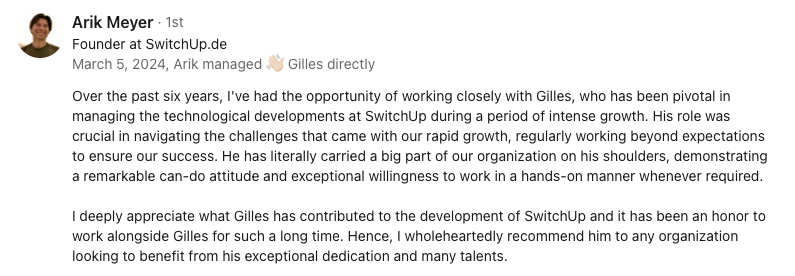Abstract:
R programming has become a staple in the data science community, offering unparalleled tools for data analysis and visualization. This language is not only powerful but also highly flexible, enabling programmers to handle complex data with ease. However, with great power comes great responsibility. Effective coding practices in R are essential to leverage its full potential while ensuring code maintainability and efficiency. This article explores how R programmers can improve their coding strategies for better data management and analysis outcomes. From optimizing performance to harnessing R's rich package ecosystem for advanced data visualization, we provide actionable insights for professionals seeking to enhance their data analysis projects. Understanding these best practices in R programming will not only boost your analytics projects but also contribute to a more robust and efficient data science workflow.
The versatility and power of R programming
The data science community has widely embraced R programming for its exceptional ability to handle complex data analysis and visualization tasks. Why has R garnered such admiration, you ask? The answer lies in its versatility and power, making it a go-to tool for data scientists around the globe.
R's strength stems from its specialized capabilities in statistical computing and graphics. Whether you are dealing with massive datasets or intricate models, R is equipped to manage it with finesse. The language is not just about crunching numbers; it's about presenting them in a way that tells a compelling story. That's where R excels – it allows users to create detailed and stunning visualizations that can bring any data-driven project to life.
Moreover, R's flexibility caters to a wide range of data analysis needs. From simple summary statistics to more advanced techniques, this programming language offers a plethora of built-in functions and packages. These tools simplify tasks that would otherwise be cumbersome and time-consuming, turning data analysis into a more intuitive and enjoyable process.
One of the true strengths of R lies in its comprehensive package ecosystem. Whether you're aiming to perform machine learning, time series analysis, or bioinformatics, there’s likely an R package designed specifically for that purpose. This ecosystem is continually expanding, thanks to contributions from a vibrant community of data scientists and statisticians who consistently push the boundaries of what R can achieve.
Another aspect that makes R indispensable is its ability to integrate seamlessly with other technologies. Whether you're working with SQL databases, leveraging Hadoop's distributed processing power, or incorporating Python scripts, R can collaborate effectively, ensuring that your data analysis workflow remains smooth and unhindered.
In a nutshell, R's potency as a statistical tool, combined with its adaptability and rich package repository, makes it an essential asset for data professionals. As you dive deeper into learning and harnessing the potential of R, you'll come to appreciate why so many in the data science community consider it a cornerstone of their analytical toolkit.
Optimizing performance in R programming
Performance optimization in R programming is an essential aspect that can significantly influence the efficiency and speed of your data analysis projects. While R is known for its powerful capabilities, without proper performance tuning, even the best-written script can become a bottleneck. Let's explore some best practices for writing efficient R code, managing large datasets, and boosting execution speed.
Writing efficient code
When working with R, an important step towards better performance is writing clean and efficient code. Here are a few tips to keep your code running smoothly:
- Vectorization: Take advantage of R’s ability to perform vectorized operations. Instead of using loops, which can be slow, vectorized operations apply functions to entire vectors or arrays, greatly increasing speed.
- Avoiding inefficiency: Beware of using nested loops and complex function calls within your code, as these can dramatically slow down execution. Instead, explore R's built-in functions which are often faster and more efficient.
- Preallocating memory: Allocate memory for objects beforehand rather than growing them in loops, which can be time-consuming. Functions like vector(), matrix(), and data.frame() are handy tools for this purpose.
Managing large datasets
Handling large datasets can be a challenging task, but R offers several strategies to make this easier:
- Data.table package: Utilize the data.table package, which is known for its speed and efficiency in handling large data sets. Its syntax is concise, and it offers powerful functionalities for data manipulation.
- Efficient Data Storage: When dealing with massive datasets, consider using efficient file formats like Feather or Parquet to reduce load times and memory usage.
- Chunking Data: Process data in chunks rather than loading the entire dataset into memory at once. Packages such as ff and bigmemory are designed to facilitate this process, making it easier to work with datasets that exceed your available RAM.
Improving execution speed
Beyond writing efficient code and managing large datasets, there are additional methods to speed up execution:
- Parallel Processing: Take advantage of parallel processing to execute multiple operations simultaneously. Libraries like parallel, foreach, and future can help distribute tasks across multiple cores or nodes.
- Profiling your code: Use the profvis package to profile your R code and identify bottlenecks. By understanding where your code spends the most time, you can target specific areas for optimization.
- Compiled Code: For computationally intensive tasks, consider integrating compiled code using packages such as Rcpp, which allows you to write C++ code that can be called from R, greatly enhancing performance.
Utilizing these techniques can enhance the efficiency and performance of your R programming endeavors, leading to more timely and insightful data analysis. By focusing on writing efficient code, effectively managing large datasets, and improving execution speed, you can transform your R projects into powerful tools that deliver results with impressive speed and accuracy.
Harnessing R's package ecosystem for advanced data visualization
One of the standout features of R is its comprehensive package ecosystem designed to meet a variety of data visualization needs. For those who aim to take their visual storytelling to the next level, mastering these visualization packages can be a game-changer. Let us take a closer look at a few of the most popular packages and how they can enhance your data visualizations.
ggplot2: the foundation of elegant visualizations
ggplot2 is renowned for its flexibility and intuitiveness when it comes to creating detailed and aesthetically pleasing graphics. Built around the grammar of graphics theory, ggplot2 allows users to construct visualizations layer by layer, providing extensive customization options. Whether you need scatter plots, line graphs, bar charts, or more complex plot types like heatmaps and density plots, ggplot2 can do it all magnificently.
Shiny: interactive web applications in R
For those who seek interactivity in their visualizations, look no further than Shiny. This package enables users to build interactive web applications directly from R, making it easier to share data insights and engage with end-users. By integrating widgets like sliders, drop-downs, and buttons, Shiny allows for dynamic user interaction, making your visualizations not just informative but also highly engaging.
Custom visualization examples
Combining ggplot2 and Shiny, along with other specialized packages, opens up a world of possibilities for custom visualizations:
- Time series analysis: Employ ggplot2 to create detailed and layered time series plots, and add interactive controls through Shiny to filter and highlight specific time periods.
- Geospatial data: Utilize packages like leaflet or sf to map data points, and combine with Shiny to create maps that users can interact with, zoom into, and explore in detail.
- Network analysis: R packages such as igraph can visualize complex networks, while interactivity through Shiny can help users to filter nodes and examine relationships dynamically.
Investing time in mastering these packages not only expands the range of visualizations you can create but significantly enhances their quality and insightfulness. These tools can transform your data into compelling visual stories, making it easier to convey complex information and drive data-driven decisions effectively.
Effective coding practices for maintainability and scalability
Ensuring clean and maintainable code in R programming is essential for creating scalable and efficient data analysis workflows. Well-crafted code is not just critical for current projects but also lays a solid foundation for future developments. Adhering to coding standards, incorporating proper documentation, and employing strategies for writing scalable code can make a significant difference.
Adopting coding standards
Establishing and following consistent coding standards is crucial. These standards help maintain clarity and uniformity across codebases, making it easier to read and understand:
- Naming conventions: Use meaningful variable and function names with consistent patterns, such as camelCase for variable names and CapitalizedWords for function names.
- Indentation and spacing: Maintain a consistent indentation style and use spaces to enhance readability. Typically, two spaces per indentation level is a good practice in R.
- Commenting code: Add comments liberally to explain the purpose of functions, complex calculations, and key sections of code. This practice is invaluable when returning to the code after a break or when collaborating with others.
Proper documentation
Clear documentation is the backbone of maintainable code. It helps others (and yourself) understand the logic and functionality of scripts and packages. Effective documentation practices include:
- Code comments: Integrate inline comments to describe the purpose and functionality of specific code sections without overdoing it.
- Function documentation: Use Roxygen2 or similar tools to document functions, including descriptions of parameters, return values, and usage examples. This structured documentation can be automatically converted into user-friendly formats.
- README files: Include detailed README files at the project or package level, describing the overall purpose, setup instructions, and how to use the included scripts or functions.
Writing scalable code
Scalability is another cornerstone of effective coding practices. Writing code that can handle expanding data sizes and complexities ensures long-term viability:
- Modular code: Break down large, monolithic scripts into smaller, reusable functions and modules. This approach not only aids in understanding but also facilitates testing and debugging.
- Version control: Implement version control using tools like Git. This practice helps manage changes, collaborate with others, and keep a history of modifications.
- Efficient algorithms: Focus on using efficient algorithms and data structures. This includes choosing the right data handling packages, such as data.table for large datasets, and leveraging vectorized operations.
By embedding these practices into your workflow, you ensure your R code remains clean, maintainable, and scalable. This leads to more robust and efficient data analysis processes, enabling effective collaboration and easier troubleshooting. Building these habits early saves time and effort in the long run, turning coding into a smoother and more enjoyable experience for everyone involved.
Enhancing data science workflows with R best practices
To truly harness the capabilities of R, one must embrace a combination of efficient coding, performance tuning, and advanced visualization techniques. Throughout this article, we've examined how adopting these practices can significantly elevate your data science projects.
First and foremost, writing clean and maintainable code is essential. By adhering to coding standards, incorporating comprehensive documentation, and ensuring modularity, you lay the groundwork for scalable and sustainable analysis. These habits not only improve readability but also facilitate collaboration and easier debugging.
Performance optimization is another crucial element. Leveraging techniques such as vectorization, preallocating memory, and managing large datasets with efficient packages can dramatically enhance the speed and efficiency of your R scripts. Methods like parallel processing and code profiling enable further optimization, ensuring that your computations are swift and reliable.
R's rich package ecosystem is indispensable for advanced data visualization. Utilizing packages like ggplot2 for elegant static plots and Shiny for interactive web applications expands your toolkit, allowing for insightful and engaging visual representations. These tools facilitate better communication of your data findings, making complex information more accessible and actionable.
Ultimately, mastering these best practices transforms your approach to data analysis. By writing maintainable code, optimizing performance, and creating compelling visualizations, you can deliver more accurate and timely insights. Embracing these strategies not only improves the quality of your work but also enhances your efficiency, making your data science workflows more robust and impactful. Remember, the journey to becoming a proficient R programmer is continuous, and refining these skills consistently will lead to more meaningful and successful data-driven projects.














